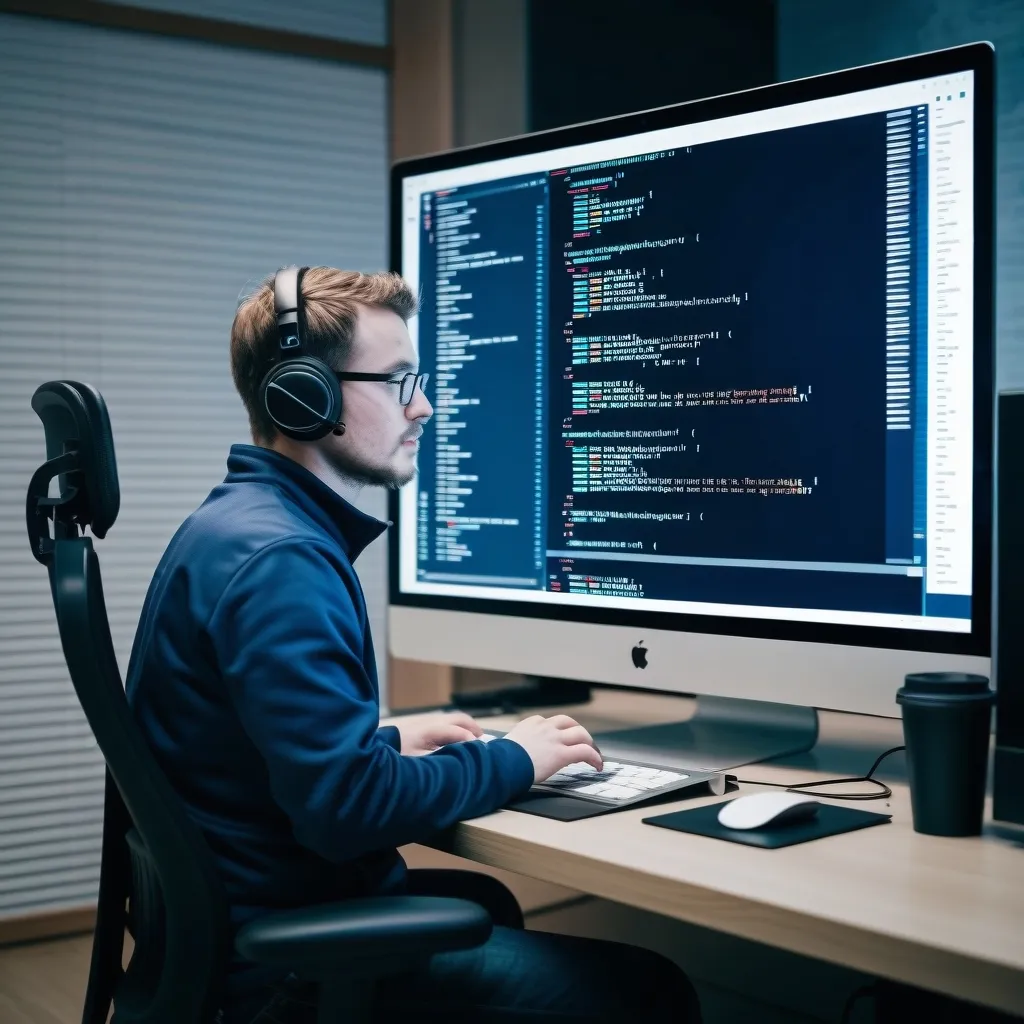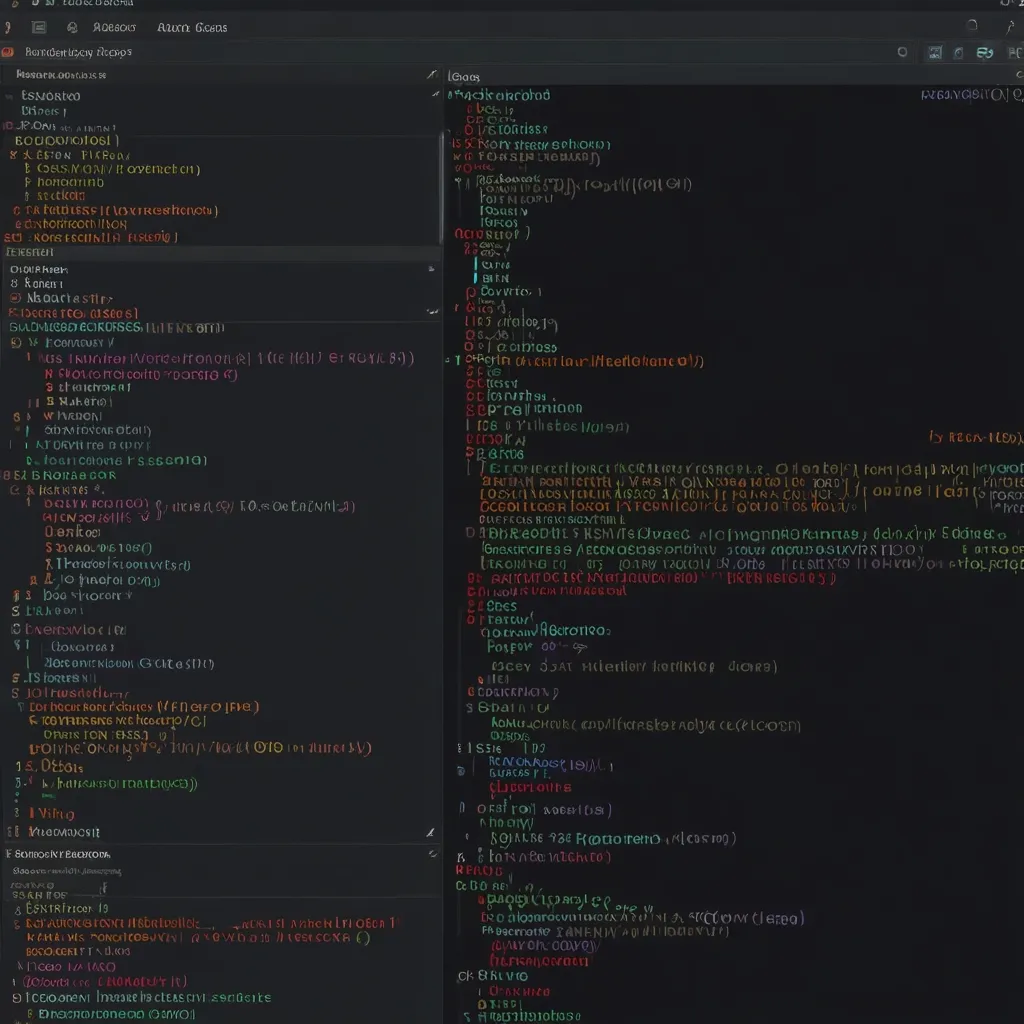Welcome to the world of collaborative music production! Ever dreamed of jamming with your buddies across the globe in real-time? Well, you’re in luck because we’re about to dive into the nitty-gritty of creating a multi-user music production tool that’ll knock your socks off.
First things first, let’s talk about the tech stack we’ll be using. We’ve got a buffet of options here, but I’m partial to a combo of Python for the backend, JavaScript for the frontend, and WebSockets for real-time communication. Trust me, it’s a match made in coding heaven.
Now, let’s get our hands dirty with some code. We’ll start with setting up our WebSocket server using Python and the asyncio library. Here’s a taste of what that might look like:
import asyncio
import websockets
async def handle_client(websocket, path):
try:
async for message in websocket:
# Process and broadcast the message
await broadcast(message)
finally:
await unregister(websocket)
async def broadcast(message):
for client in CLIENTS:
await client.send(message)
CLIENTS = set()
async def main():
server = await websockets.serve(handle_client, "localhost", 8765)
await server.wait_closed()
asyncio.run(main())
This little snippet sets up a WebSocket server that can handle multiple clients and broadcast messages between them. It’s like the backbone of our collaborative tool.
On the frontend, we’ll use JavaScript to connect to our WebSocket server and handle real-time updates. Here’s a basic example:
const socket = new WebSocket('ws://localhost:8765');
socket.onmessage = (event) => {
const message = JSON.parse(event.data);
// Update the UI based on the received message
updateUI(message);
};
function sendUpdate(update) {
socket.send(JSON.stringify(update));
}
Now, you might be wondering, “How do we actually make music with this?” Great question! We’ll need to implement a Digital Audio Workstation (DAW) interface in our frontend. This is where things get really exciting.
We can use the Web Audio API to create and manipulate audio in the browser. It’s like having a mini recording studio right in your web app. Here’s a simple example of creating a synth with Web Audio API:
const audioContext = new (window.AudioContext || window.webkitAudioContext)();
function playSynth(frequency) {
const oscillator = audioContext.createOscillator();
oscillator.type = 'sine';
oscillator.frequency.setValueAtTime(frequency, audioContext.currentTime);
const gainNode = audioContext.createGain();
gainNode.gain.setValueAtTime(1, audioContext.currentTime);
gainNode.gain.exponentialRampToValueAtTime(0.001, audioContext.currentTime + 1);
oscillator.connect(gainNode);
gainNode.connect(audioContext.destination);
oscillator.start();
oscillator.stop(audioContext.currentTime + 1);
}
This function creates a simple synthesizer that plays a note at a given frequency. You can call this function whenever a user interacts with your virtual keyboard or sequencer.
But wait, there’s more! We need to think about synchronization. When multiple users are collaborating on a track, we need to make sure everyone’s hearing the same thing at the same time. This is where things can get a bit tricky.
One approach is to use a central server to keep track of the global timeline and broadcast regular sync messages to all clients. Here’s a rough idea of how this might work:
import time
GLOBAL_TIMELINE = 0
LAST_SYNC_TIME = time.time()
async def sync_timeline():
global GLOBAL_TIMELINE, LAST_SYNC_TIME
while True:
current_time = time.time()
GLOBAL_TIMELINE += current_time - LAST_SYNC_TIME
LAST_SYNC_TIME = current_time
await broadcast({"type": "sync", "timeline": GLOBAL_TIMELINE})
await asyncio.sleep(1) # Sync every second
On the client-side, we’d adjust our local timeline based on these sync messages:
let localTimeline = 0;
socket.onmessage = (event) => {
const message = JSON.parse(event.data);
if (message.type === 'sync') {
localTimeline = message.timeline;
}
// Handle other message types...
};
Now, let’s talk about data management. When you’re working with multiple users, you need a robust way to handle conflicting edits. One popular approach is Operational Transformation (OT). It’s a bit like magic - it allows multiple users to edit the same data simultaneously without stepping on each other’s toes.
Here’s a super simplified example of how OT might work for adjusting the volume of a track:
def transform_volume(operation1, operation2):
# If both operations are on the same track, combine them
if operation1['track'] == operation2['track']:
return {'track': operation1['track'], 'volume': operation1['volume'] + operation2['volume']}
else:
return operation1
# On the server
def apply_operation(operation):
global project_state
track = project_state['tracks'][operation['track']]
track['volume'] += operation['volume']
broadcast(operation)
Of course, real-world OT is much more complex, but this gives you a taste of the concept.
Now, let’s sprinkle in some personal experience. I remember the first time I tried to implement real-time collaboration in a music app. It was like trying to herd cats while juggling flaming torches. But let me tell you, the moment when it all came together and I could jam with my buddy halfway across the country? Pure magic.
One thing I learned the hard way: latency is your enemy. Even a slight delay can throw off the whole experience. That’s why it’s crucial to optimize your network code and use techniques like client-side prediction to create a smooth user experience.
Another key aspect is the user interface. You want something that’s intuitive and responsive, even when dealing with complex musical structures. I’ve found that using a framework like React can be a game-changer here. It allows you to create a dynamic, component-based UI that can handle the complexities of a DAW interface.
Here’s a quick example of how you might structure a track component in React:
function Track({ id, volume, pan, effects }) {
const [localVolume, setLocalVolume] = useState(volume);
const handleVolumeChange = (newVolume) => {
setLocalVolume(newVolume);
sendUpdate({ type: 'volume', track: id, volume: newVolume });
};
return (
<div className="track">
<VolumeSlider value={localVolume} onChange={handleVolumeChange} />
<PanKnob value={pan} />
<EffectsRack effects={effects} />
</div>
);
}
This component encapsulates all the controls for a single track, making it easy to manage and update.
Now, let’s talk about scaling. As your user base grows, you’ll need to think about how to handle increased load. One approach is to use a microservices architecture, where different aspects of your application (audio processing, real-time communication, data storage) are handled by separate, specialized services.
You might use Go for your high-performance audio processing service, Node.js for your real-time communication server, and Python for your business logic and data management. Here’s a quick example of how you might structure a Go service for audio processing:
package main
import (
"fmt"
"github.com/gordonklaus/portaudio"
)
func main() {
portaudio.Initialize()
defer portaudio.Terminate()
stream, err := portaudio.OpenDefaultStream(0, 2, 44100, 0, processAudio)
if err != nil {
fmt.Println(err)
return
}
defer stream.Close()
stream.Start()
select {}
}
func processAudio(out []float32) {
for i := range out {
// Apply audio effects here
out[i] = 0
}
}
This sets up a basic audio stream that you can use to apply effects in real-time.
As you can see, creating a real-time multi-user collaborative music production tool is no small feat. It involves a complex interplay of various technologies and concepts, from real-time communication and audio processing to data synchronization and user interface design.
But don’t let that intimidate you! Take it step by step, start with a basic prototype, and gradually add more features. Remember, Rome wasn’t built in a day, and neither was Ableton Live.
The most important thing is to keep the user experience at the forefront of your mind. After all, what’s the point of all this cool tech if it doesn’t help people make awesome music together?
So go forth and code! Who knows, maybe your tool will be the next big thing in music production. And if you ever feel stuck, just remember: every great developer was once a beginner. Keep pushing, keep learning, and most importantly, have fun with it. Happy coding, and may your beats always be fresh and your latency low!






